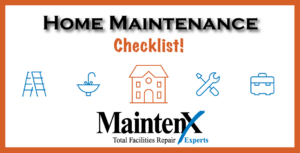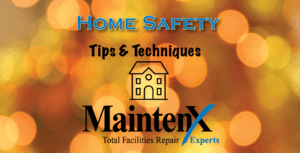 Owning a home is more than just a one-time expense, it’s a continuing financial commitment. Just like regular oil changes for your car keep it running well for years, routine home maintenance will keep you from wasting money and time later down the road.
Owning a home is more than just a one-time expense, it’s a continuing financial commitment. Just like regular oil changes for your car keep it running well for years, routine home maintenance will keep you from wasting money and time later down the road.
It can be frightening to consider all the tasks associated with home maintenance. It’s a long list, after all. The silver lining, though, is that you don’t need to be a professional to do most of it.
Moisture
One vital component of preemptive home maintenance is keeping moisture at bay.
- Install rain gutters to direct water away from your home
- Clear leaves from your gutters twice a year
- If your gutter drains are stopped up, flush out debris with a hose
- Fine-tune lawn sprinklers to not oversaturate your lawn
- Clean your refrigerator coils with a coil cleaning brush at least twice a year
Inspect your Fire Extinguisher
Every home should have at least one fire extinguisher. Don’t have one? Get one. Fire emergencies can happen to anyone. It’s crucial to have an extinguisher on hand in case there’s a grease or electrical fire—or if an unattended candle sets something aflame.
Inspecting your fire extinguisher doesn’t require much work:
- Make sure it’s easily accessible
- Check that the gauge shows adequate pressure
- Monitor for signs of wear and tear
- Replace before expiration date
Inspect and Change HVAC Filters
A lot of experts recommend changing the filters monthly, but that isn’t always necessary. For smaller homes without pets, you’ll probably be fine changing them every 2 to 3 months. If the filter is dirty, change it out. If you have to change them monthly, you can usually go with less expensive filters. This will save money in the long run.
Have questions about HVAC service or maintenance? Contact the experts at MaintenX!
Better Safe than Sorry
It may seem like a lot of work, but keeping up with regular maintenance on your home will save you money and headaches down the road.

 We all know it’s essential to protect our homes against risks like burglary, arson, and fire. Having a state-of-the-art security monitoring system can help mitigate these dangers, but certain techniques can make your home even safer.
We all know it’s essential to protect our homes against risks like burglary, arson, and fire. Having a state-of-the-art security monitoring system can help mitigate these dangers, but certain techniques can make your home even safer. You almost certainly know that sitting too much is terrible for our health and minds. Using a stand up desk at work can provide a lot of benefits to our overall health and our mental health and the quality of our work.
You almost certainly know that sitting too much is terrible for our health and minds. Using a stand up desk at work can provide a lot of benefits to our overall health and our mental health and the quality of our work.